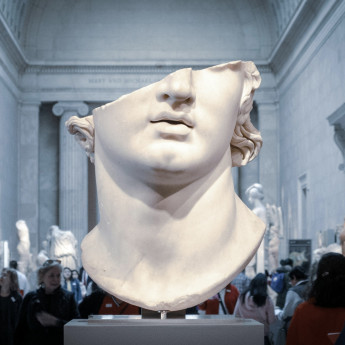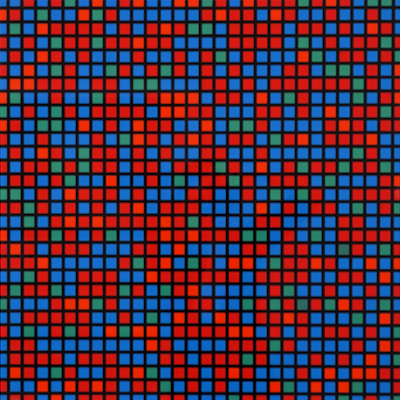


Details
Artist
Styles
Óvalo en el rojo (de la serie Síntesis) - silkscreen on Plexiglas with metal rods - Signed and numbered on a label affixed to the reverse. // Óvalo en el rojo by Rafael Jesús Soto, created in 1979, is a mixed-media artwork that showcases his signature approach to kinetic and optical art. Part of the Síntesis series, this piece incorporates silkscreen on Plexiglas, framed with metal rods to create a layered effect. The composition centers on an oval filled with tightly spaced black lines, set against a vibrant red background with orange lines extending horizontally across the surface. The layered structure and linework produce an optical illusion of movement and depth, challenging the viewer's perception as they move around it. This piece exemplifies Soto's exploration of spatial dynamics and visual interaction, creating an immersive and dynamic experience.
Óvalo en el rojo, 1979
form
Medium
Size
38.7 x 38.7 X 13.5 cm
- Inches
- Centimeters
Edition
Price
- USD
- EUR
- GBP
Details
Artist
Styles
Óvalo en el rojo (de la serie Síntesis) - silkscreen on Plexiglas with metal rods - Signed and numbered on a label affixed to the reverse. // Óvalo en el rojo by Rafael Jesús Soto, created in 1979, is a mixed-media artwork that showcases his signature approach to kinetic and optical art. Part of the Síntesis series, this piece incorporates silkscreen on Plexiglas, framed with metal rods to create a layered effect. The composition centers on an oval filled with tightly spaced black lines, set against a vibrant red background with orange lines extending horizontally across the surface. The layered structure and linework produce an optical illusion of movement and depth, challenging the viewer's perception as they move around it. This piece exemplifies Soto's exploration of spatial dynamics and visual interaction, creating an immersive and dynamic experience.
- Recently Added
- Price (low-high )
- Price (high-low )
- Year (low-high )
- Year (high-low )
What is geometric abstract art?
Geometric abstraction is a form of abstract art that uses geometric shapes arranged in a non-illusionistic space (though not always) and combined into non-representational (non-objective) compositions. Based on years of artistic research, some artists have proposed that geometric abstraction offers a solution to modern challenges by rejecting traditional illusionistic practices in favor of clarity and simplicity.






























